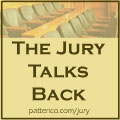This is Part 12 of a 17-part series of posts summarizing Bob Murphy’s indispensable book Choice: Cooperation, Enterprise, and Human Action . Murphy’s book is itself is a summary of Ludwig von Mises’s classic treatise “Human Action.” Like previous posts, this post is a summary of a summary.
. Murphy’s book is itself is a summary of Ludwig von Mises’s classic treatise “Human Action.” Like previous posts, this post is a summary of a summary.
The purpose of these posts is to popularize and spread the word about Austrian economics and educate the public. Rather than list all the previous parts, I have created a category for all these posts, called “Human Action and Choice,” so that all these posts can be read (in reverse order) with a single click. Note well: any errors in these summaries are mine and not Murphy’s.
Murphy says of chapter 12: “The material in this chapter is the most technical of the present book.” But it will make the explanation of the business cycle in post 14 more understandable, so it’s worth it.
We begin with some definitions. We have already discussed commodity money (such as gold, for example) and how it emerged on the market. A money substitute is a trusted alternate form of money that can be redeemed for the commodity money on demand. “Money in the broader sense” encompasses both the substitute and the commodity money (“money in the narrower sense”). When the issuer suspends redemption for the commodity, but people believe the suspension is temporary, the medium of exchange is credit money. Once the suspension is understood to be permanent, we have fiat money. (Recall from past chapters that Mises believed all fiat money necessarily originated with a commodity money — and logically had to emerge in that manner, or its purchasing power could never be determined.)
Commodity money allows new producers to produce money, while fiat money must of necessity be issued by a monopoly (a government). No single firm (such as a private mint) can monopolize commodity money, because the firm is not creating money, it is ensuring the authenticity of existing money.
As noted, in addition to money (whether it be commodity money or fiat money), there are also money substitutes, which fall into two broad categories. One is a money certificate, in which the issuer has set aside the money to back it. Another is fiduciary media, in which the issuer does not retain the commodity in reserve. In fractional reserve banking, a guy named Eugene might deposit $1000 of actual money — dollar bills — into an account. The bank might loan $900 of Eugene’s money, but still allow Eugene to withdraw the full $1000. Eugene’s bank balance consists of $100 of money certificates and $900 of fiduciary media. Fiduciary media in a gold standard setting could also include token money — coins that don’t have the requisite amount of gold, for which the government did not retain a 100% reserve of gold to back up the nominal face value.
To sum up, money in the narrower sense could include commodity money, credit money, or fiat money. Money substitutes could include money certificates or fiduciary media (uncovered bank deposits or token money). Money in the broader sense encompasses money in the narrower sense plus money substitutes.
A sneak peek of the relevance of all this: as banks create new money by creating fiduciary media (uncovered bank deposits created when loans are made), the quantity of money in the broader sense increases. As we saw in post 11, an increase in the money supply will tend to lead to a drop in money’s purchasing power or value, through the basic law of supply and demand (due to the lower marginal utility of extra units of money out of the total stock). Such a credit expansion (accomplished through the creation of new fiduciary media) tends to force banks to lower interest rates to encourage borrowing.
In other words: credit expansion tends to lead to higher prices and lower interest rates, while credit contraction leads to the opposite.
At this point Murphy pauses to delineate the two distinct functions of banks: 1) to serve as a safe place to keep money, and 2) to serve as a credit intermediary. Murphy explains that a bank can serve the latter role, even while keeping 100% reserves on demand deposits (deposits that can be withdrawn immediately at any time) — by lending out only funds obtained from depositors who purchase certificates of deposit, or make time deposits. (In either situation, the bank customer has made a deposit in which the customer’s right of withdrawal is limited by contract.) While lending and 100% reserves for demand deposits are not mutually exclusive, many Austrian economists differ on whether fractional reserve banking is desirable or legitimate.
Murphy next turns to Mises’s view of free banking: banking without government regulation. Mises believed that only free banking could prevent dangerous credit expansion, because banks that overissue fiduciary media would be forced to settle accounts with other banks, and the expanding bank would see its reserves dwindle. To avoid insolvency, the expanding bank would have to contract credit to strengthen its reserves. This is all a function of the interbank check clearing process. When customers of bank A write checks to customers of bank B, bank B comes to bank A and demands the money. Bank A must hand over the cash, or it will lose its reputation for being a sound bank. If bank A has overexpanded its issuance of fiduciary media, bank B (and bank C, and bank D, and so on) will come knocking, asking for their cash, at some point. So when each bank has only a small percentage of the population as its clients, “any attempt to expand credit will lead to a quick drain on its reserves.”
By contrast, government intervention allows all the banks to expand credit together. When the inflation takes place in all banks, you don’t see cash reserves accumulating in conservative banks and leaving inflationary banks. Having a central bank allows cartelization, which in turn allows a general expansion of the money supply . . . which governments love.
This is why governments want to have a central bank. Not to protect people. To have a mechanism to allow endless inflation.
Next, we’ll look at capital, time preference, and the theory of interest.


